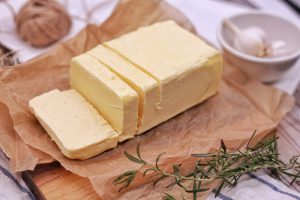There are a lot of diet trends out there: the fruit and veggie-heavy Mediterranean, raw-food paleo, and the blue zones diet, to name a few. It seems like diet fads go in and out of fashion rapidly, but many modern diets have the same recurring themes: minimize saturated fats and processed foods, increase fruit and vegetable intake, and drink more water. Many of these diets also recommend limiting dairy. This may seem counter-intuitive because most of us have grown up hearing dairy industry claims like milk is good for growing bones. It’s not that those are false claims. Milk is full of calcium, but so are many plant-based dairy alternatives that are great for your body!
Benefits of Dropping Dairy

Many people who eliminate dairy from their diet do so on the advice of their doctor: they find out they are lactose intolerant, diabetic, or have an auto-immune condition that is triggered by dairy. Other people make this lifestyle choice to try and alleviate day-to-day symptoms like:
- Nasal inflammation/stuffy nose
- Acne, eczema, and other skin conditions
- Bloating and digestive problems
- Headaches
- Foggy memory
Experts caution that eliminating dairy might lead to a deficit in vital nutrients like calcium and vitamin D. There are many ways to add these nutrients into your diet, like eating dark leafy greens, fish, and nuts and legumes. If you’re concerned about a nutrient deficiency, check with your doctor before making extreme dietary changes. For most people, adding dairy alternatives to a well-balanced diet should be sufficient. The key to all healthy food shopping, including for dairy alternatives, is to read and understand the nutrition labels. For example, 1 cup of 2% milk has 130 calories, 5g of fat, 8g of protein, and 15-20% of vitamins A and D and calcium. You’ll want your alternatives to align with those, or to have another adequate source in your diet.
Easy Alternatives
It might seem intimidating to eliminate part of the “food pyramid,” and you may also worry about missing out on certain foods and flavors. But try not to think of it as cutting out dairy, think of it instead as filling your meals with delicious alternatives. It can be exciting to taste-test new things! Look for substitutes like: 
- Dairy-free cheeses: There are many dairy-free cheeses to choose from, and with the right brands you can not only get all the flavor of dairy cheese, but even the melty, gooey texture. Try Teese cheddar cheese, Daiya shredded mozzarella, and Chao sliced pepper jack.
- Butter: There are almost as many dairy-free butter brands as the real thing! For a creamy, buttery texture and flavor, try Earth Balance, I Can’t Believe It’s Not Butter, or Miyoko’s Creamery.
- Nut milks: Almond, Coconut, and Cashew are the top 3 nut milks. Almond milk is readily available in most stores at a reasonable price, has a texture that is similar to milk, and a mild taste. Coconut is thinner than almond milk (almost like low-fat milk), and has a distinct coconutty flavor. Cashew milk is creamy, smooth, and delicious but a bit pricier than the other two.
- Oat milk: Oat milk has been trending lately. One of the great things about oat milk is that you can make it at home! Just blend 1 cup of rolled oats with 4 cups of water for 30-45 seconds (be careful not to over blend or it ends up slimy) and then strain through a fine mesh sieve or old, clean tee shirt. You can also add a date, maple syrup, or some honey to sweeten it. You can even add a few drops of vanilla extract.
- Ice Cream: There’s no shortage of dairy-free ice cream! Try sorbet for a flavorful frozen snack, or an oat, almond, or coconut milk-based ice cream. You can also make your own “nice”cream by blending slices of frozen bananas with your flavors of choice.
With so many options, you can take your time transitioning to dairy-free eating. Experimenting with alternatives is good for your health, and can be fun and exciting. Start by replacing one food that you use often, like milk or butter. Once you find a good alternative for that, move on to one that feels a little more difficult – like your favorite cheese for a charcuterie board, or your go-to ice cream. You might start to notice a difference in the way you feel right away.